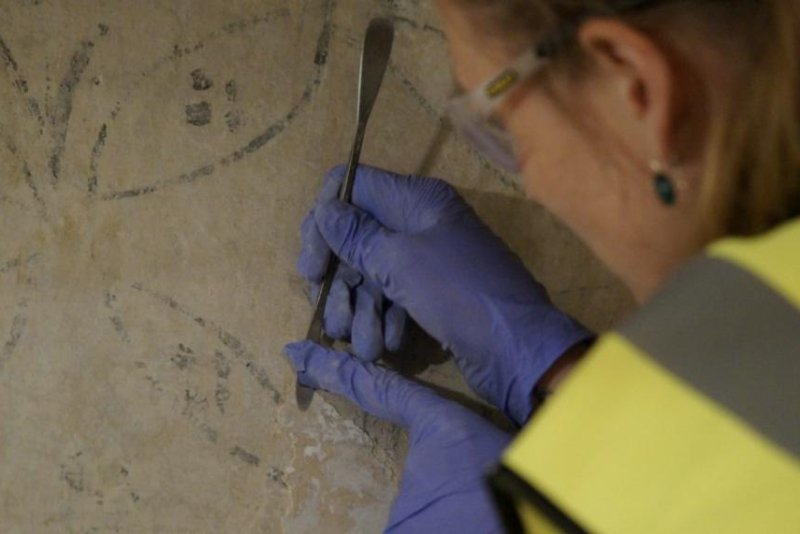A worker scrapes away paint and plaster to reveal wall paintings inside Lindisfarne Castle. Photo courtesy the National Trust
March 21 (UPI) -- Renovators working to restore Lindisfarne Castle in northeast Britain have uncovered 17th century wall paintings they say are rare because of the building's military use at the time.
The unexpected discovery came as the workers peeled off layers of paint and plaster inside the castle, which was constructed in 1550 and originally used as a fort on Holy Island.
"They used charcoal to draw it, very simple carbon, and there are areas of red pigment so they might have been painted and colored. We know it was done professionally, so you didn't just sit and do it yourself, and in those days there was a guild of wall painters who they would have used."
National Trust representatives said the find is important because the paintings date back to when the building was used as a temporary garrison to house soldiers.
"We're really excited, because this discovery suggests that the castle may have been a more permanent, domestic dwelling for soldiers than we previously thought," a statement from the National Trust said.
The renovations are part of a $4.24 million renovation project mostly meant to alleviate damp inside the building. After its use as a garrison, a man named Edward Hudson bought the castle in the early 20th century and had it renovated into a home by architect Edwin Lutyens.
"The existence of interior decoration prior to Lutyens' renovation of the castle adds a new dimension to its historic function. Based on our knowledge of the physical history of Lindisfarne Castle, it suggests that there might have been more to life at the castle than just a military base," said John Wynn-Griffiths, a conservator for the National Trust.
The National Trust expects to reopen the castle this summer after two years of renovations.
"We will probably never know who commissioned the work or who carried it out, but we do know the names of many soldiers who were stationed here and we could muse that perhaps one decided to make his mark on the place -- maybe William Browne, the master gunner who was here for at least 10 years from 1681 might be a good candidate, or perhaps Robert Muschamp, deputy governor of Holy Island in 1677," Lewis said. "What amazes me is that these have survived at all given the amount of repairs, renovations and interventions that have taken place here over the years -- most notably the Lutyens work in 1903-6."















